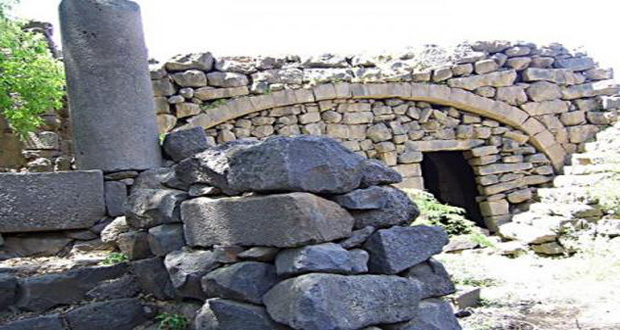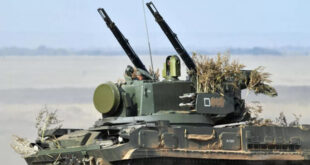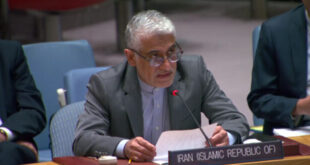Sweida, SANA- The town of Qanawat-also Kanatha in Ancient Greek- in Sweida southern province has always been famous for its majestic archeological palaces and its magnificent nature and moderate climate.
Modern and ancient buildings spread between the archeological palaces which are distinguished by their great architectural design as they were built of engraved basalt stones roofed with aqueducts and stone-made pillars.
Monuments made of granite have been unearthed on the sides of the valley, which penetrates the town near the circular tower and on the hills situated between the town and Sweida city to the west of “Si'” archeological site, one of the most ancient and important sites in the province.
“Throughout various historical eras, Qanawat has played a significant role manifested in its archeological monuments which date back to the Nabataean, Romanian, Byzantine and Arab Islamic ages,” Director of Sweida Archeology Department Hussein Zain-Eddin says.
Zain-Eddin indicated that the town was part of the “Decapolis”, a group of ten cities on the eastern frontier of the Roman Empire established by Emperor Pompey. They were grouped together because of their language, culture, location, and political status.
Special coins were used by the residents of the town during the Roman age which were called “Kanatha”.
The archeological monuments in the town include circular towers, parts of the city’s tower and the remains of a Khan (caravansary) at which pilgrims used to stay on their way to perform pilgrimage in Si’ Temple.
The climate in the town is moderate in summer and it is cold at night, while in winter the climate becomes very cold and the town witnesses heavy snowfalls whose thickness reaches up to 1 meter.
The town is considered an important resort due to its climate and its charming nature where terebinth trees and bushes spread over wide areas. Peasants in the town mainly plant apple trees and grapevines, and molasses industry is one of the most important industries in the town.
R. al-Jazaeri / H. Said
 Syrian Arab News Agency S A N A
Syrian Arab News Agency S A N A










